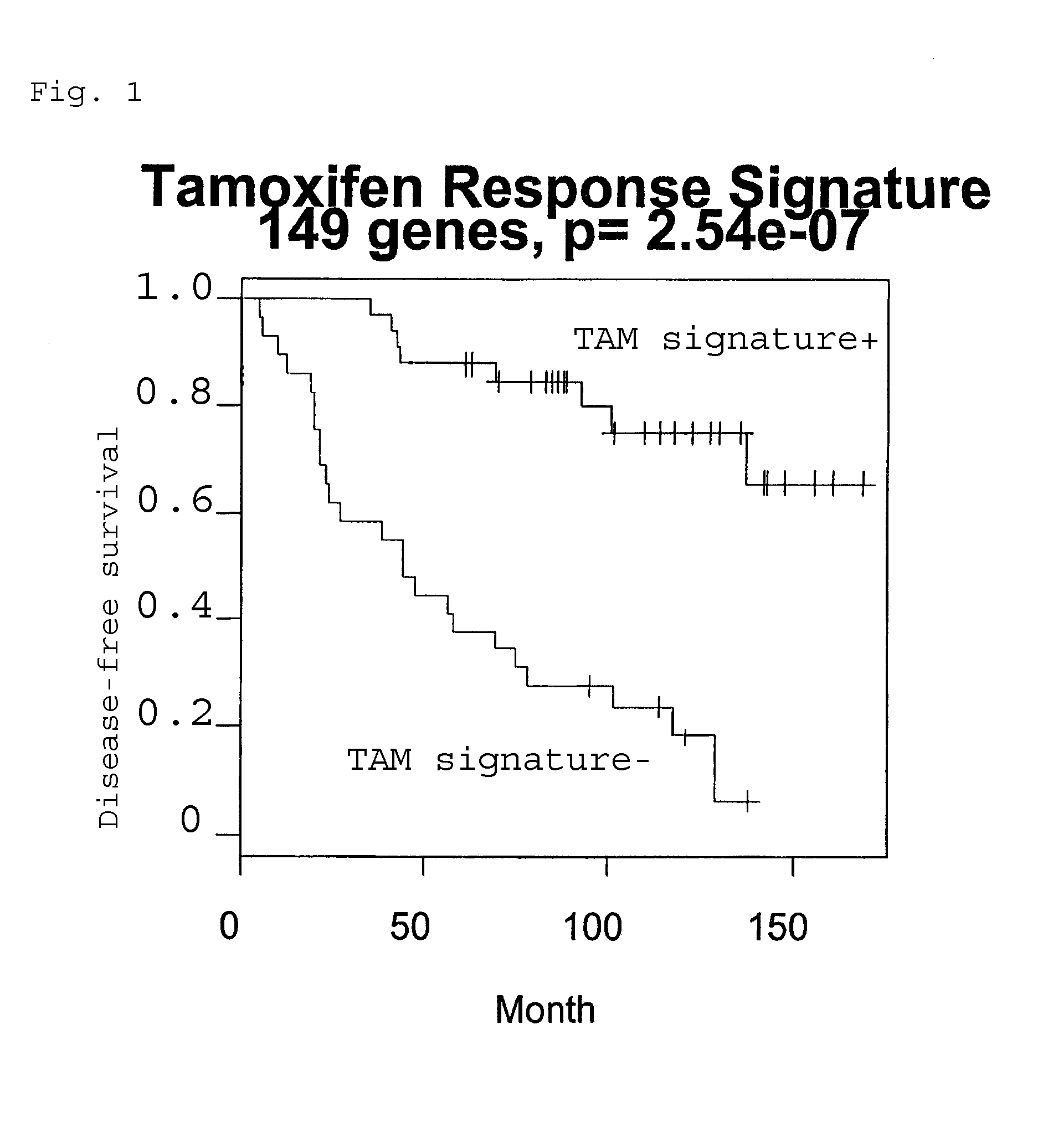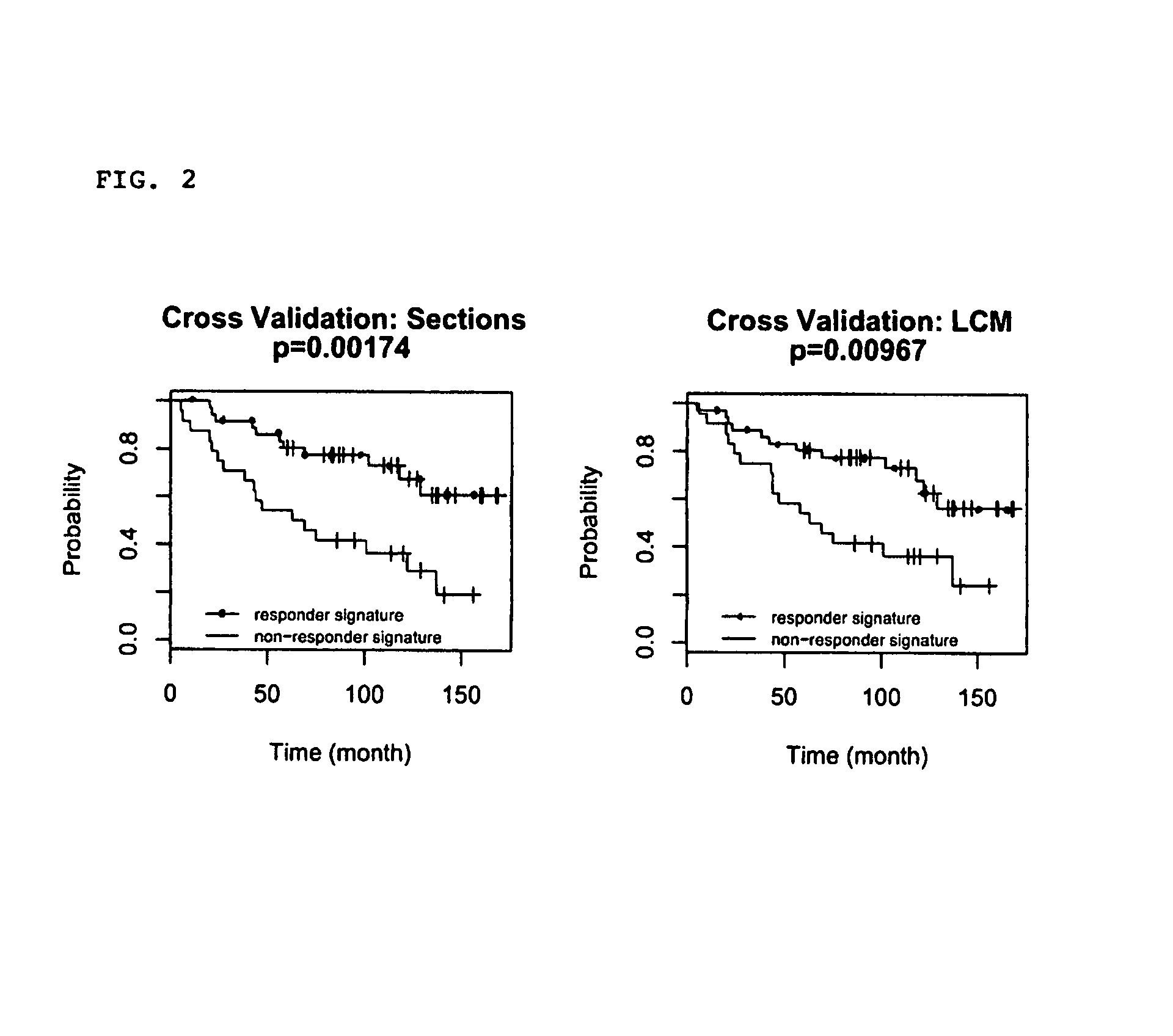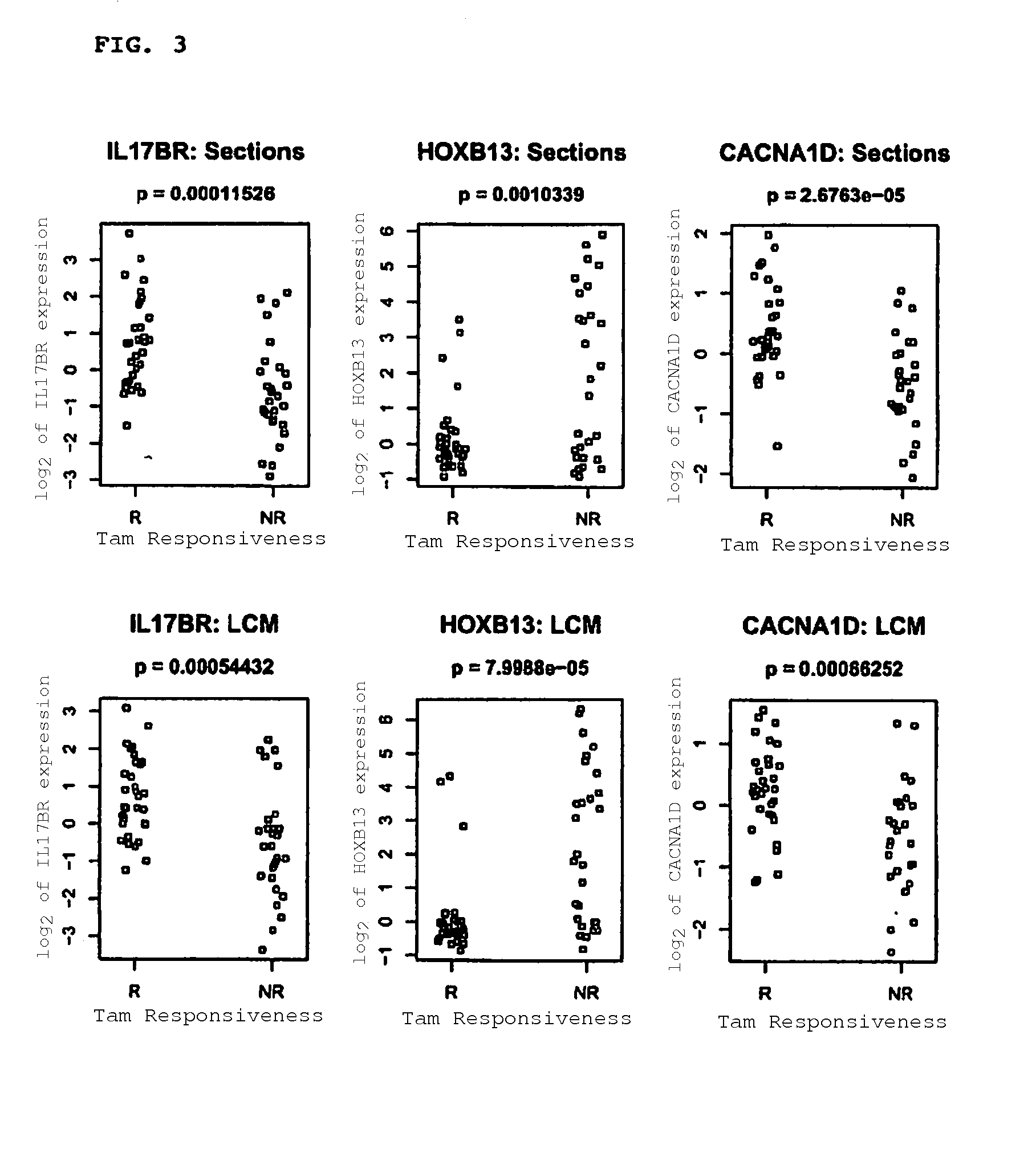Predicting outcome with tamoxifen in breast cancer
a technology of tamoxifen and breast cancer, applied in the field of predicting the outcome of tamoxifen in breast cancer, can solve the problems of up to 40% of er+ tumors not responding or developing resistance, cancerous tumors, invade and damage nearby tissues and organs, etc., and achieve the effect of improving predictive power over analysis and determining the responsiveness of tam treatmen
- Summary
- Abstract
- Description
- Claims
- Application Information
AI Technical Summary
Benefits of technology
Problems solved by technology
Method used
Image
Examples
example 1
Gene Expression Signature Predicting TAM Treatment Outcome in Breast Cancer
[0175]A cohort of 62 estrogen receptor-positive breast cancer patients were uniformly treated with the anti-estrogen drug tamoxifen (TAM), and followed for up to 14 years. 33 patients recurred whereas 29 patients remained disease-free during the entire follow up periods. Correlating gene expression patterns with tumor recurrence / non-recurrence, a set of genes was discovered whose expression levels differ significantly between these two groups. This gene expression signature can thus be used to predict whether a patient will respond to TAM as first-line treatment based on the gene expression profile of a routine biopsy of the primary cancer.
[0176]Laser capture microdissection was performed on each tumor biopsy to procure pure populations of cancerous epithelial cells, which were then analyzed on a 22000-gene high-density oligonucleotide microarray. The top 25% genes with the greatest variances across all sampl...
example 2
Kaplan-Meier Survival Curves of Patients Stratified by Cross-Validation
[0182]Kaplan-Meier analysis was performed to assess the differential survival of patients stratified by the gene expression signature. Leave-one-out-cross-validation was performed. Briefly, one of the 62 patients was left out as a test sample, and the other 61 samples were used in Cox regression to both select significant genes (pixi) for all selected genes. The mid-point m between the median scores for the two patient groups (recurrence / non-recurrence) in the training set was calculated: m=(median score of recurrence group+median score of non-recurrence group) / 2, and the score for the test sample S was compared with m to classify the test sample to either the recurrence (S>m, TAM signature−) or non-recurrence group (S<=m, TAM signature+). This entire procedure was repeated 62 times to generate a classification for each patient. Disease-free survival curves of the two groups as assigned by the cross-validation pr...
example 3
Identification of Biomarker Predictors of TAM Treatment Outcome
[0183]Samples from 60 patients with ER+ primary breast cancer, and treated with adjuvant TAM, were selected tamoxifen based on treatment outcome. 28 had developed tumor recurrence with a median time of 4 years, and 32 remained disease-free with a median follow-up of 10 years (Table 3). Patients who remained disease-free during the entire follow up period were likely to represent responders to TAM, although a small subset of them might have been cured by surgery alone. Those patients who developed tumor recurrence despite TAM therapy either did not respond or developed resistance to TAM and are hereafter referred to as non-responders for brevity. To control for known prognostic factors, tumors between these two groups were matched by tumor size, lymph node status and tumor grade.
[0184]
TABLE 3Patients and tumor characteristicsTumorSample IDtypeSizeGradeNodesERPRAgeDFSStatus1389D1.720 / 1PosPos80940648D1.12 0 / 15PosND621600289...
PUM
| Property | Measurement | Unit |
|---|---|---|
| Fraction | aaaaa | aaaaa |
| Fraction | aaaaa | aaaaa |
| Fraction | aaaaa | aaaaa |
Abstract
Description
Claims
Application Information
 Login to View More
Login to View More - R&D
- Intellectual Property
- Life Sciences
- Materials
- Tech Scout
- Unparalleled Data Quality
- Higher Quality Content
- 60% Fewer Hallucinations
Browse by: Latest US Patents, China's latest patents, Technical Efficacy Thesaurus, Application Domain, Technology Topic, Popular Technical Reports.
© 2025 PatSnap. All rights reserved.Legal|Privacy policy|Modern Slavery Act Transparency Statement|Sitemap|About US| Contact US: help@patsnap.com



